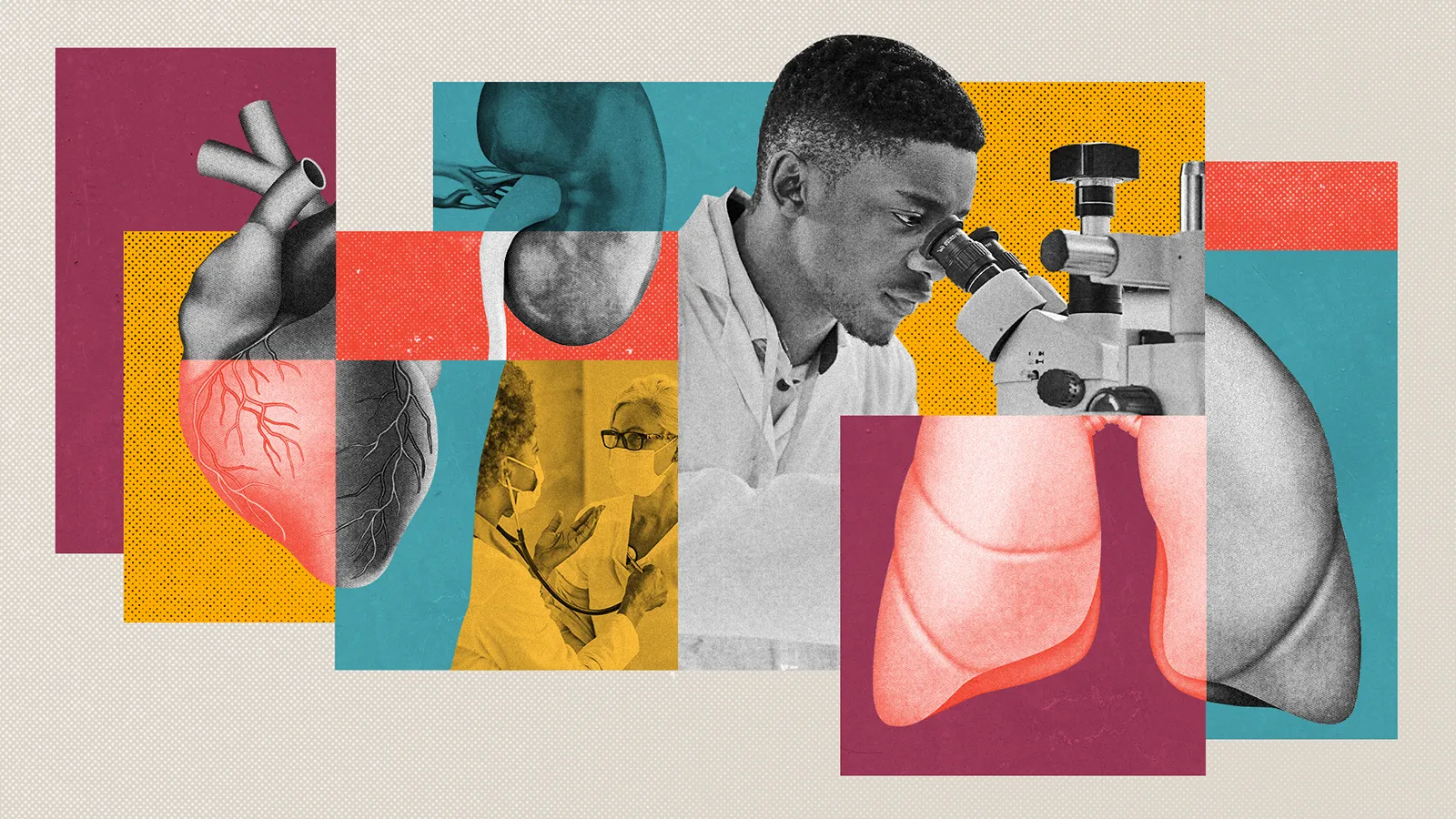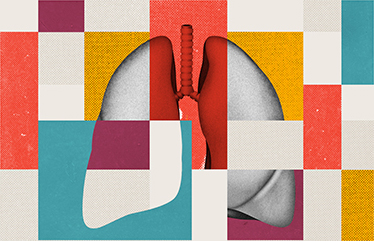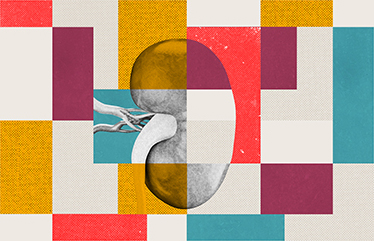The Investment Case for Transforming Health Care to Act Early on Non-Communicable Diseases

An FP Analytics issue brief commissioned and made possible with financial support from AstraZeneca.
Editorial control has been retained by FP Analytics.
January 2023
Non-communicable diseases (NCDs)—diseases generally acquired through genetic, physiological, environmental, and behavioral factors rather than infection—constitute the number-one cause of death worldwide. They are responsible for killing approximately 41 million people annually, with someone dying prematurely every two seconds and 86 percent of NCD-related premature deaths occurring in low- and middle-income countries (LMICs). Projections suggest that left unchecked, NCDs could account for 75 percent of all deaths by 2030. However, this worrying trend can be stopped by expanding access to proven methods of early action—from increased education to therapeutic intervention.
This brief, launched in parallel to the 2023 World Economic Forum, aims to inform the mobilization of additional resources and reinvigorate cooperation across governments, health care providers, the private sector, and non-profits to change the tide in the fight against NCDs. Specifically, it demonstrates the multidimensional case for expanding investment in policies, strategies, and technological innovations to facilitate the early detection and effective treatment of NCDs. This is particularly relevant where strong evidence for the effectiveness of early intervention is already available, such as in the case of cardiovascular diseases (CVDs), lung cancer, chronic kidney disease (CKD), and chronic obstructive pulmonary disease (COPD). As the analysis below highlights, targeted investment, early actions, and sustained public-private partnerships to address NCDs not only could reduce preventable mortality and morbidity but also could have transformative socioeconomic and environmental effects by reducing costs dramatically and unleashing a range of benefits across societies and economies.

Why is Investment in Early Action Needed Now?
In the coming decades, several trends are likely to compound the health, socioeconomic, and other challenges related to NCDs, including:
- Ageing Populations: NCDs are closely associated with aging, so the aging global population will likely result in a higher prevalence of NCDs worldwide, and particularly in LMICs, where 80 percent of those over age 60 will live by 2050. In sub-Saharan Africa, for example, new cancer cases are expected to rise by 92 percent between 2020 and 2040, and researchers predict that by 2030, two-thirds of patients with CKD will reside in developing economies.
- A Changing Climate: Climate change is raising risk factors for NCDs, for instance, through increased temperatures and air pollution, which are associated with CVDs, or increased exposure to carcinogens due to extreme weather events. The relationship between health and environment is bidirectional. The intersection of health, health care, and the environment is therefore critical to combating NCDs.
- The Pandemic Threat: COVID-19 demonstrated the world-changing impact of fast-spreading infectious diseases, as well as their ability to intensify other health challenges, such as NCDs. In total, some 60 to 90 percent of the estimated 6.6 million COVID-19 deaths thus far have involved people with one or more NCDs, and the additional strain on health care systems has caused people to miss out on timely diagnosis and early treatment of many common NCDs.
These trends, and their interaction with existing NCD burdens, will increase the prevalence of multi-morbidities in the global population unless concerted action is taken to alleviate the strain on health care systems, economies, and societies generally.
How Can Investment Reduce Avoidable Hospitalizations and Deaths Caused by NCDs?
Despite the existence of effective, often low-cost interventions for both the earlier detection and earlier treatment of many NCDs, health systems in both developed and developing economies continue to underserve those who are at risk of, or diagnosed with, NCDs, resulting in a failure to prevent the onset of NCDs and insufficient care to patients. This is especially critical considering the prevalence of NCDs. For example, CVDs kill roughly 17.9 million people per year, and CKDs affect more than 850 million people globally. Avoidable deaths and hospitalizations from NCDs represent a missed opportunity on the part of governments and the health care sector, one that prevails around the world. By eliminating key risks to health, as much as 86 percent of deaths from CVDs, 55 percent of deaths from cancer, and 70 percent of deaths from chronic respiratory diseases could be delayed or prevented. Researchers in Scotland have found that nearly one-fifth of all deaths from NCDs there could have been prevented through public health initiatives, while a 2015 study of hospitalizations in Senegal found that 54 percent were related to NCDs and potentially preventable.
In addition to their impact on quality of life, hospitalizations due to NCDs have a significant financial toll at the household and societal levels. Severe exacerbations of COPD that lead to hospitalization, for example, can be up to 60 times more expensive than mild or moderate cases, accounting for around $13.2 billion of the nearly $50 billion total annual costs of COPD treatment. Similarly, hospitalizations for CKD—of which around half have been deemed avoidable—cost upwards of $100 billion in annual Medicare spending alone in the U.S., and an estimated 188 million people per year in LMICs experience untenable health expenditures. Avoidable hospital admissions often have long chains of causation along which appropriate interventions could have been made at multiple points to prevent or treat the disease at an earlier stage, both to reduce medical spending and improve patient health outcomes, as hospitalization is often associated with higher mortality.
While their implementation may be initially expensive, early interventions on NCDs have been demonstrated to be cost-effective and successful at reducing the negative impacts of ill health. Early actions—such as increased awareness, behavioral interventions, and therapeutic treatments—represent a promising route to addressing NCDs by lowering disease prevalence, delaying or preventing disease onset, and ultimately reducing demands on limited health resources. Forward-looking early action strategies to address NCDs today can change the narrative and create a far healthier tomorrow. To make that goal a reality, investment in NCDs worldwide needs to be reconceptualized in terms of the multitude of health, social, economic, and environmental co-benefits that it secures, not the nominal cost of its provision.

What Strategies for Early Action Against NCDs are Cost-Effective and Impactful Investments?
Effective early action on NCDs calls for a response that is integrated and holistic. While approximately 86 percent of World Health Organization (WHO) member states report having an action plan for NCDs, just 53 percent have a plan that is integrated and multisectoral. To meet this challenge, the world needs to mobilize resources through political leadership and public-private partnerships to enact known and proven solutions on a global scale.
Early action to combat NCDs involves mobilizing a range of public, private, and non-profit partners to engage a wide array of tools across life-cycles, geographies, and demographic groups. These tools have several complimentary goals, from lowering the likelihood of an individual getting an NCD to mitigating a disease’s effects once it takes hold. Successful early intervention often depends on integrated, adequately resourced, and resilient health care systems, but there is an array of policy options which can be tailored to the context of a country, its resources, and the needs of the local population. Making use of scientific evidence, and guided by private-sector innovation and non-profit advocacy, governments can influence society-wide behavior through fiscal and regulatory measures as well as legislative intervention into health care systems.
Some early intervention methods that could be reflected in integrated NCD strategies include:
- Raising Disease Awareness: A low-cost form of early action involves educating relevant populations about NCDs, particularly the behavioral risks that increase their prevalence, such as unhealthy diets, smoking, and drinking. Improving patients’ health literacy can support them to proactively address NCD risk factors in their lives. Starting young is key: around two-thirds of premature deaths from NCDs are linked to habits begun in adolescence. Examples include mass media campaigns to reduce sugar consumption, such as “Are We Drinking Ourselves Sick?” in Jamaica, or youth education in India about the dangers of smoking.
- Enabling Early Detection: Increased screening and early-detection efforts can aid health care providers in identifying at-risk individuals early, to prevent disease onset or slow its progression. These processes can be tailored to target specific groups who are most at risk due to environmental, demographic, occupational, or other factors, as highlighted by the WHO. For example, the regular screening of Type 2 Diabetes patients can enable early detection of CKD, thereby helping to address the challenge of multi-morbidities.
- Establishing High-Quality Primary Care: Equitable, low-cost access to high-quality and integrated primary care is key to enabling holistic patient care in the fight against NCDs. This can include the adoption of coordinated patient pathways, which guide and incentivize healthcare providers to detect, treat, and refer patients rapidly, in alignment with the most recent clinical guidelines.
- Integrating Digital Innovations: New technology, such as telehealth, digital health records, or wearable devices, can make medical care and advice more accessible, encourage the following of clinical guidelines, or help to detect patients who are at risk of developing the disease.
- Ensuring Broad Access to Therapeutic Options: Therapeutic care can help alleviate the strain from NCDs by delaying the progression of disease or stopping it entirely. For example, treating high blood pressure, including through therapeutic drugs, has been shown to lead to reduced rates of heart disease, stroke, and heart failure.
While each of these interventions can be somewhat effective on its own, effective action on NCDs, and particularly the achievement of UN Sustainable Development Goal (SDG) 3.4—to reduce premature deaths from NCDs by one-third through prevention and treatment by 2030—will entail the coordinated deployment of multiple approaches to address various NCDs. Well-rounded, whole-of-life care and health policy that treats patients rather than symptoms will be key, but equally important will be the reduction of inequalities and inequities in health care. Programs such as the UK’s NHS Core20PLUS5 seek to improve early detection and action on NCDs in groups that health care services frequently neglect, including underserved ethnic and religious minorities, and people with learning disabilities.

What Are the Returns on Investment of Early Action on NCDs?
Critically, early action on NCDs can deliver aggregate benefits that often far outstrip the costs of intervention, driven by averted illnesses and improved health outcomes. Beyond the immediate benefits of preventing illness, there are a multitude of co-benefits, from the reduced care burden on families and health care systems, to more productive communities and societies, to greater environmental sustainability. Together, these society-wide benefits make a compelling case—socially, economically, and environmentally—for investment.
Benefits to Patients and Caregivers
NCDs present compounding health, financial, and social costs on patients and caregivers. Beyond the immediate physical and cognitive symptoms of the diseases, patients are likely to experience emotional stress, loss of ability to work, and high costs of dietary requirements and medical treatment. Caregivers may feel physical exhaustion from providing care, emotional distress from worrying about the patient, reduced working hours and lower earnings due to caring responsibilities, and risks of social isolation. This represents just a cross-section of some of the burdens levied by NCDs, which can also worsen as other factors are introduced, such as NCD multimorbidity—the presence of more than one NCD in a patient. Studies have found NCD multimorbidity to be associated with higher chances of premature death, physical and social impairment, lower quality of life, higher cost of care, and greater mental health challenges. By contrast, early action on NCDs worldwide can restore years of more fulfilling and productive life for patients and caregivers through averted cases, reduced disease severity, and delayed or prevented deaths.

Economic Benefits
NCDs increase demand for public health resources, and lead to reduced economic activity due to the premature death, early exit from the labor force, absenteeism, and reduced work capacity of patients and caregivers. The top five most common NCDs—CVDs, chronic respiratory diseases, cancer, diabetes, and mental health conditions—are projected to cost the global economy $47 trillion between 2010 and 2030. In the United States, the insurance company Blue Cross Blue Shield estimates the overall economic cost of caregiving alone at $44 billion from lost economic output, including from 650,000 lost jobs and 800,000 caregivers suffering from absenteeism at work. As the population continues to age, these losses will increase.
These costs can be drastically reduced through early intervention, which can also generate significant economic returns. The Copenhagen Consensus estimates that four NCD interventions—reducing sodium intake, taxing tobacco use, providing aspirin to those at risk of acute myocardial infarction, and providing drug therapy for those at high risk of heart disease—can generate a global return on investment (ROI) of $8 in benefits for each dollar invested. Such returns are particularly favorable in poorer countries; each dollar spent toward NCD prevention through cost-effective interventions (as laid out in the WHO Best Buys, 16 high-impact interventions to address and reduce NCDs) in LMICs is expected to yield nearly $7 for every dollar invested in societal benefits from improved productivity and life expectancy. In total, a study in The Lancet Health Policy projects that spending an additional $18 billion per year from 2023 through 2030 in LMICs would avert 39 million deaths and produce an additional net economic benefit of $2.7 trillion by the end of the decade, or an ROI of more than 19 to 1. Implementation of the aforementioned Best Buys could create an additional 50 million healthy years of life, and the associated health gains could be worth more than $230 trillion in economic and social benefits, in addition to health care savings for individuals and governments.

Environmental Benefits
The global health care sector produces approximately 4.4 percent of the world’s greenhouse gas emissions, over half of which is produced by the United States, China, and the EU. Globally, these emissions come from the health care supply chain (71 percent), health care facilities and vehicles (17 percent), and energy purchases (12 percent). Importantly, however, per capita carbon emissions do not correlate with health system quality, which suggests that health care can become more environmentally sound without sacrificing quality of care.
Early action on NCDs can lessen the environmental impact of the health care industry by decreasing the disease burden worldwide and therefore reducing the requirements for preventative and curative care in both hospital and ambulatory settings. New tools that enable early action—such as telehealth—not only aid preventative care, for example, by informing patients about risk factors, but also reduce the carbon footprint of health care by reducing health-related travel.


Looking Ahead: Investments Today for a Healthier, More Sustainable Tomorrow
NCDs represent a whole-of-society problem that demands a whole-of-society response. While COVID-19 diverted attention and resources away from the fight against NCDs, the recovery from the pandemic presents an opportunity to regroup and better strategize regarding future plans and investments in health care. Multistakeholder alliances such as the Partnership for Health System Sustainability and Resilience (PHSSR) have formed in the wake of the pandemic to strengthen and integrate global health systems. Alliances such as PHSSR also help to illuminate the socioeconomic case for early action. These initiatives bring together public and private health care actors to address the growing burden of NCDs, among other challenges, which are key to improving health outcomes and building health care resilience in the face of co- and multi-morbidities.
Addressing several key issues simultaneously could encourage and facilitate greater investment into effective early interventions against NCDs:
- Identifying priority areas for interventions could help to focus research attention and funding on the most pressing challenges, including through strengthening data on disease burdens around the world—as, for example, the WHO’s NCD Progress Monitor has begun to do—and targeting at-risk populations.
- Shifting policy and financing time-horizons from the short to the medium and long term could facilitate the creation of sustainable funding streams and create a clearer understanding of the tangible benefits and returns on investing in early intervention and NCD prevention.
- Efficient and forward-thinking implementation of early intervention practices could be facilitated by exploring and amplifying emerging or long-standing practices that are cost-effective, efficient, and innovative, particularly for early detection and diagnosis. Launching limited-scope pilot programs within a single location or targeting a certain population could help to build a library of best-practice interventions.
Given the wide range of impacts from NCDs, stakeholders from all sectors can play an integral role in maintaining sustained progress against chronic diseases, from ministries of health, economy, and finance, to the food industry, environmental regulators, and non-profits. As with the fight against climate change, the scope of the challenge is immense but clear, and the social, economic, and environmental benefits of ongoing prevention, rather than future remedial action, make an unimpeachable case for proactive investment and concerted action today.
Publication date: January 2023
By Isabel Schmidt (Senior Policy Analyst), Dr. Mayesha Alam (Vice President of Research), and Phillip Meylan (Affiliate Researcher), with illustration by Andrei Cojocaru.

FP Analytics, the research and advisory division of Foreign Policy, produced this issue brief, which was commissioned and made possible with financial support from AstraZeneca. Editorial control has been retained by FP Analytics.

